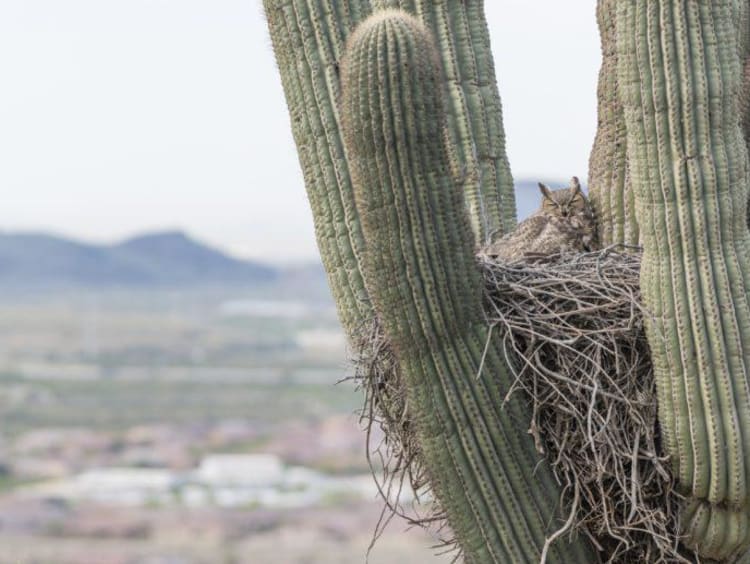The Desert Owl Population Improvement Project: Undergrad RDP Spotlight

The Desert Owl Population Improvement (DOPi) Project is a biotechnology research project that aims to find solutions that produce improvements in the numbers of the owl population. The deterioration of habitats and complex economical communities due to urbanization has created harsh conditions in which the cactus ferruginous pygmy owl and Western burrowing owl are struggling to survive and repopulate. A decrease in these native species upsets the delicate ecosystem and leads to a decrease in other species such as the great horned owl, hawks, badgers and coyotes, while also affecting larger agricultural areas.
A local Phoenix animal sanctuary, Wild at Heart Raptors, has made efforts to rescue and rehabilitate injured birds of prey and recreate the hatching environments that are decreasingly available to these owls in the wild. The DOPi Project focuses on one burrowing owl who was rescued by the Wild at Heart sanctuary after being found tied to its deceased siblings in a pipeline. This owl had lost its lower limb, and without mobility or the ability to burrow, this owl could be at risk of euthanization. A plaster mold of the owl’s leg will be created and a 3D scanner used to obtain precise measurements of the amputated leg. With this, a design can be made for the prosthetic prototype of the lower portion of the lost leg. To obtain an optimal fit and function of the prosthetic, analysis and simulations will be performed using SolidWorks.
The second part of the DOPi Project is geared towards the Cactus Ferruginous Pygmy Owl. Currently, the remaining known pygmy owls in Arizona have been rescued and are held in captivity at the Wild at Heart sanctuary. Wild at Heart has tried to recreate natural hatching environments for these owls with their wooden hatch boxes that attempt to emulate the conditions of a saguaro cactus, but the rates at which pygmy owl eggs are hatching have decreased from 90 percent to less than 50 percent over the last five years.
The internal and external temperatures of the hatch boxes were taken and averaged and research was performed to determine the optimal structure and temperature the synthetic hatch box needs in order to match that of a cactus. A prototype of the hatch box was created using SolidWorks, and the materials necessary for thermoregulation will be researched and eventually built into the design. Arduinos are going to be used to monitor the temperature and humidity, which will control the usage of a humidifier and fan if these values deviate from optimal measurements. Once a full prototype is created, the synthetic hatch boxes will be used during the next hatching season to test their functionality.
Through the applications of biology, project design, and empirical evidence, the Desert Owl Population Improvement Project aims to improve the numbers and the protection of the owl populations by way of creative solutions.
More about Sarah:
Sarah Saffer is a third-year student in Grand Canyon University’s College of Science, Engineering and Technology. She is a dedicated and driven undergraduate biomedical engineering major with an interest in specializing in biomaterials and biomechanics. On campus, she co-leads a biotechnology research and design team called the DOPi Project. Upon graduation, Sarah plans to find a rewarding job as an engineer, pursing her interests in biomedical design and working towards earning a licensure as a professional engineer.
Grand Canyon University works with our dedicated STEM students to provide the resources and experience they need to succeed. To learn how you can become a part of our prestigious College of Science, Engineering and Technology, visit our website or click the Request More Information Button on this page.
The views and opinions expressed in this article are those of the author’s and do not necessarily reflect the official policy or position of Grand Canyon University. Any sources cited were accurate as of the publish date.


